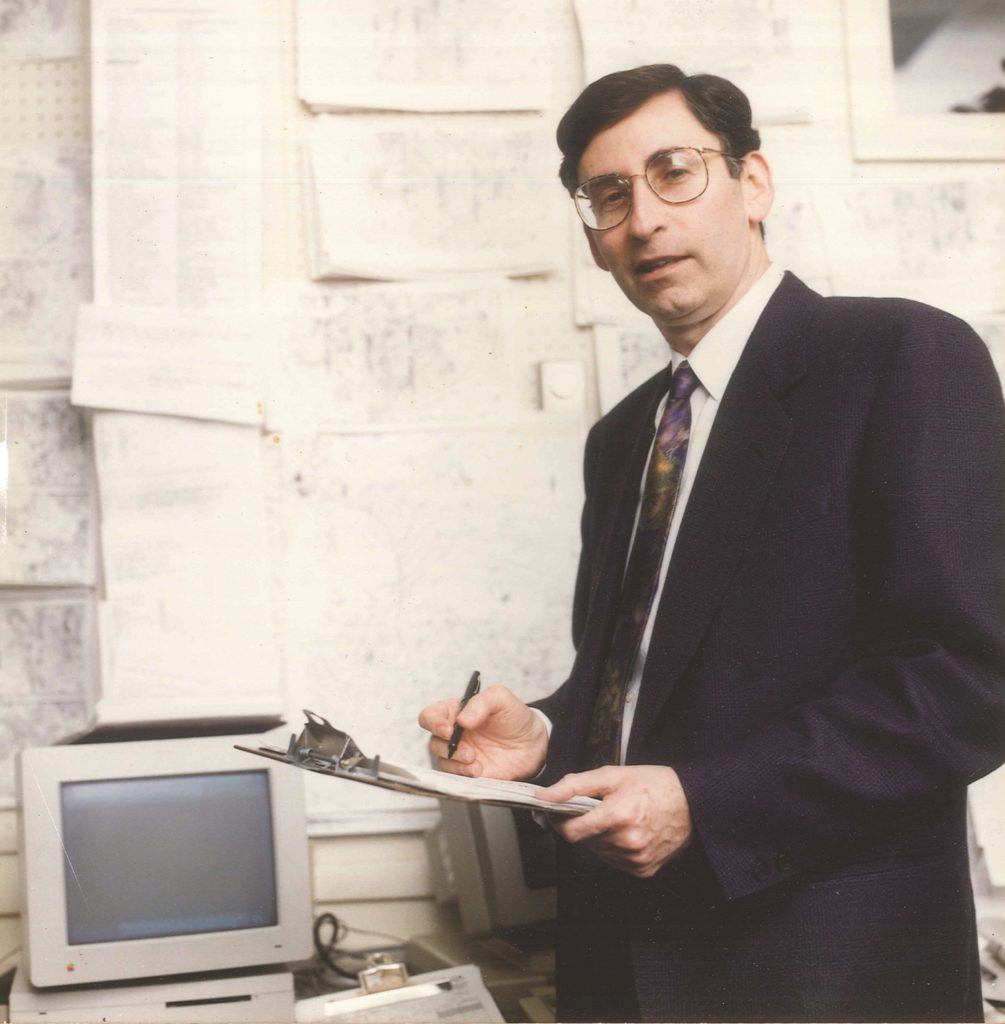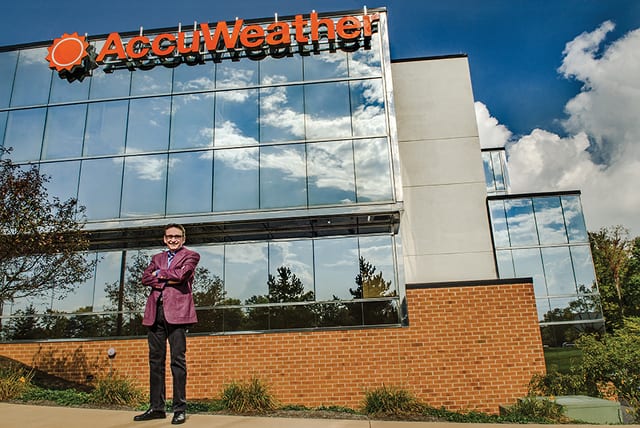In 1962, Joel Myers, then a second-year meteorology graduate student at Penn State, wanted to transform the world of weather predictions through accurate, precise forecasting. In the years that followed, his vision completely disrupted the weather industry, advancing the science and art of forecasting—helping businesses and communities make educated weather-related decisions.
Now, 60 years later, Myers’ entrepreneurial dream is the most used source for verified weather forecasting and warnings in the world. With forecasts available in 3.5 million locations globally and in more than 200 languages and dialects, State College-based AccuWeather predicts weather patterns to deliver critical forecast information for making important safety and business decisions.
“AccuWeather’s story is one of a fanatical dedication to accuracy, detail, innovation, entrepreneurship, and the loyalty and commitment of so many people who have joined this center of excellence,” says Myers, AccuWeather founder and CEO. “I have been blessed with many passionate, talented, dedicated people who wanted to help me build and expand on my dream. For that, I will be forever grateful.”
Four years after Myers established the company, AccuWeather’s Snow Warning Service became the government’s first radar service. Less than six years later, AccuWeather welcomed WARM-AM in Scranton/Wilkes-Barre and WPVI-TV in Philadelphia as its first radio station and television state coverage, respectively.

“In establishing AccuWeather, I was intensely focused on forecast accuracy, knowing that the better our forecasts became, the more valuable they would be,” Myers says. “Before we began revolutionizing weather forecasts in the 1970s, forecasts available to the public were limited in scope and accuracy, typically only covering today, tonight, and tomorrow, providing few details, and often missing major events.”
This all changed in 1975 when AccuWeather introduced the first seven-day local forecast for TV broadcasting. Success continued for the company—AccuWeather was named the official weather forecaster for the 1980 Winter Olympics in Lake Placid, New York. In 1983, the company launched its worldwide forecast services and began transmitting data and text directly to newspaper computers. AccuWeather’s technology innovations continued as it led the digital delivery of weather for newspapers, satellites, radar, and weather graphics for TV.
“AccuWeather has contributed thousands of innovations, new forecasting techniques, a variety of products, patented technological advances, improvements in accuracy and hyper-localization, better television displays, unique and popular mobile apps, colorful and more meaningful newspaper maps and weather pages, more lucid graphics and descriptions, ingenuity, and a focus on the potential impact of weather forecasts—all to help people and businesses make the best decisions, thereby saving lives, protecting property, and increasing business profitability and efficiency,” Myers says.
The 1990s saw continued growth for AccuWeather with the launches of AccuWeather.com and Local Cable Weather, a turnkey weather programming solution for cable channels. In 1997, Myers was honored by Entrepreneur Magazine’s Encyclopedia of Entrepreneurs as one of the greatest entrepreneurs in American history. Near the end of the decade, AccuWeather opened a new 52,000-square-foot global headquarters in State College.
“Despite being lured by offers from other states with attractive tax benefits, I was determined that central Pennsylvania would remain AccuWeather’s global headquarters,” Myers says.
The new millennium brought new technology for AccuWeather and the world. In 2002, AccuWeather began providing forecasts to cell phones, and AccuWeather.com saw its one billionth accessed free page. The AccuWeather 24/7 Channel launched in 2005 with ABC Television Group as the first customer. The same year, AccuWeather became the first weather service to receive the ESRI Special Achievement in GIS Award for its use of geographic information systems in forecasting.
Following Hurricane Katrina in 2006, the United States Congressional Committee recognized AccuWeather for its warning of the impending threat—twelve hours before the National Hurricane Center warning.
In 2009, the company expanded to include a new advertising sales office in Rockefeller Center in Manhattan. The same year, AccuWeather began providing weather forecasts for The New York Times. The new decade began with partnerships with more than 85 percent of major mobile phone manufacturers in 2011 and the introduction of another new technology—StoryTeller+, an interactive touchscreen system used to enhance the TV newsroom experience—in 2012. Today, StoryTeller+ is used by 14 of the top 15 broadcast television markets.
“We are proud that the AccuWeather brand, our SuperiorAccuracy, and our innovations have helped raise awareness and the value of weather forecasts and generally lifted the entire weather enterprise,” Myers says. “AccuWeather meteorologists have also educated the public about science, geography, as well as statistics and probability and many other concepts via radio, television, and newspapers.”
In 2013, AccuWeather launched a 45-day forecast, the first of its kind. Two years later, the company partnered with Huafeng Media Group for exclusive weather forecasting distribution in China. In 2017, Independent ForecastWatch’s analysis of 30 million forecasts named AccuWeather as the world’s most accurate source of weather forecasts and warnings. But, even with that honor and a forecasting philosophy that has been honed and refined for 60 years, AccuWeather President Steven R. Smith says weather forecasting remains an imperfect science.
“As technology has streamlined and effectively changed all aspects of our lives with each passing decade, we are still working to develop the ‘perfect forecast’ for every location in the world,” Smith says. “The benefits to society, the global economy, and people’s lives would be enormous. Weather prediction is such an invaluable asset to the economy and our personal lives. From a national security perspective, destructive severe weather causes deaths and costs trillions of dollars each year. We feel the solution must come from a multinational company, a company without borders because the weather has no borders. It is clear our work is not done here—there is so much more we can and will do. It’s an exciting time to be at AccuWeather.” T&G
Samantha Chavanic is a freelance writer for Town&Gown. This story appears in the September 2022 issue of Town&Gown.



